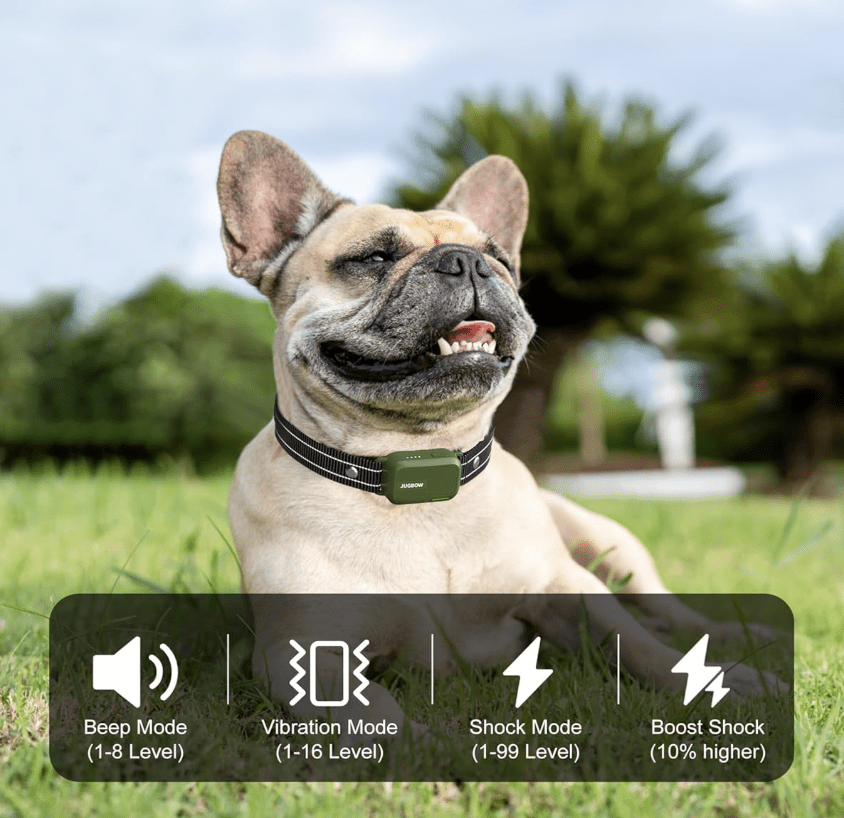Tired of Your Dog’s Constant Barking? Here’s the One Fix That Actually Works
Tired of Your Dog’s Constant Barking? Here’s the One Fix That Actually Works
If your dog’s barking is driving you (and your neighbors) up the wall, you’re not alone. Barking is one of the most common complaints from dog owners—but here’s the truth: barking isn’t just noise. It’s communication. And silencing it without understanding it? That just leads to frustration for both of you.
So what’s the one fix that actually works? Solving the root cause of your dog’s barking by meeting their mental and emotional needs first. Because when your dog’s brain is satisfied, the barking often fades away on its own.
 Click here to learn more about these collars
Click here to learn more about these collars
Why Dogs Bark (and What Most People Get Wrong)
Dogs bark for a reason. It might be boredom, anxiety, attention-seeking behavior, or simply plain excitement. The key is recognizing barking as a symptom, not the problem itself.
Here’s what most people get wrong: they treat barking as defiance. They yell, scold, or jump straight to tools like bark collars without stopping to ask: Why is my dog barking so much in the first place?
The One Fix That Works: Fulfill the Brain First
Dogs need more than a walk. They need mental stimulation, a purpose, and connection. When you fulfill your dog’s brain, you reduce the urge to bark.
A tired dog isn’t always a quiet dog. But a fulfilled dog? Now that’s different. That’s where the barking starts to fade.
Brain Games That Calm the Barking
These easy enrichment activities give your dog an outlet for their energy and instincts:
- Snuffle Mats: Mimic foraging by hiding kibble in fabric folds. Burns energy and activates natural sniffing behavior.
- Puzzle Toys: Toys like KONGs, Nina Ottosson puzzles, or wobblers make your dog think for their food.
- Box Game: Hide treats in empty boxes and let your dog sniff them out.
- Towel Roll-Up: Roll kibble in a towel and let your dog figure it out.
- Scent Work: Scatter feed in the yard or hide treats around the house.
Aim for two brain games per day and one short training session to work their mind and improve obedience. And if you want to take control of the situation, you should read this.
What About a Shock Collar?
Let’s be honest: it’s tempting. You just want peace. But shock collars are not a first-line solution, and they can backfire if used incorrectly.
When NOT to use one:
- If your dog barks from fear, anxiety, or loneliness
- If your dog is untrained or lacks mental stimulation
- If you’re just trying to stop barking without addressing why it’s happening
When it might help:
- Your dog has already had proper training and enrichment
- You’ve worked with a trainer or vet behaviorist
- The barking is putting your dog at risk (rehome, eviction, etc.)
- You commit to using the lowest effective setting, with proper guidance
This shock collar, used responsibly and sparingly, can interrupt behavior. But it won’t fix the problem unless the underlying needs are met. It should be the last tool, not the first.
Click here to learn more about this collar
Real Tools That Help Without Harm
Instead of just managing noise, aim to reduce the need to bark at all:
- White Noise or Music: Helps anxious dogs or alert barkers tune out street sounds
- Window Film or Barriers: For dogs that bark at everything outside
- Calming Treats or Pheromone Diffusers: For mild anxiety
- Interactive Feeders: Keep your dog occupied during alone time
- Training Commands: Teach “speak” and “quiet” together so they learn an off-switch
Click here to learn about the real tools to help with barking
The Real Quiet Comes From Connection
You don’t need a magic gadget to stop the barking. You need a plan. You need to meet your dog’s needs. And most of all, you need to listen to what the barking is telling you.
Because when your dog feels heard, understood, and mentally fulfilled, the barking doesn’t need to happen nearly as often.
Your dog isn’t broken. They’re just trying to be understood. Listen first. Train second. That’s the real fix.
